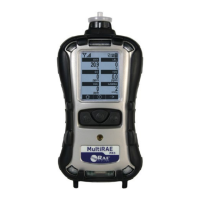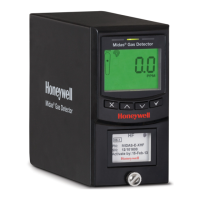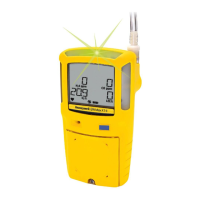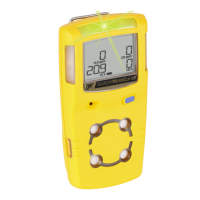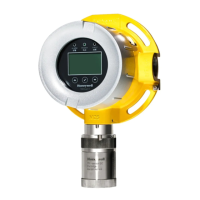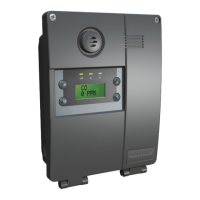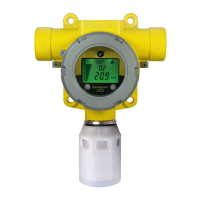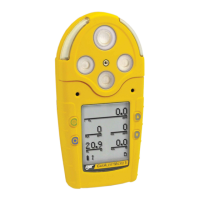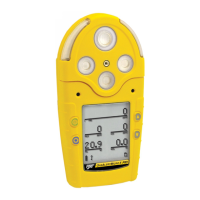Unit ID (unique identifier of the instrument’s radio), Pan ID, and Channel are read-only
parameters that help you to check whether the instrument’s wireless settings are correct (very
helpful for troubleshooting).
The next “page,” Parent ID and Device Type are also read-only. The Parent ID (the ID of the
“Parent” wireless device to which the monitor is connected) is not changeable. The device type
tells you that it is “Standard,” meaning it transmits and receives.
The third “page” is labeled “Ping,” where you can check the signal strength via RSSI (received
signal strength indication) and “ping” the network to confirm an active two-way communication
network. Each time you press [MODE] to “ping” the network, a number of sends is included
under “Sent.” If the network receives the signal and sends one back, which is in turn received by
the MultiRAE, then a number is added under “Received.”
The fourth “page” includes the type of transmitter (Region), Radio Type (model), and Tx Power
(transmission power). These are primarily for diagnostics and troubleshooting.
When you reach the fourth “page,” you can wrap around to the first one by pressing [Y/+].
Otherwise, you can press [N/-] to quit, which advances to the next screen.
Honeywell MultiRAE Series™ 33 User Manual
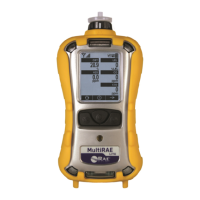
